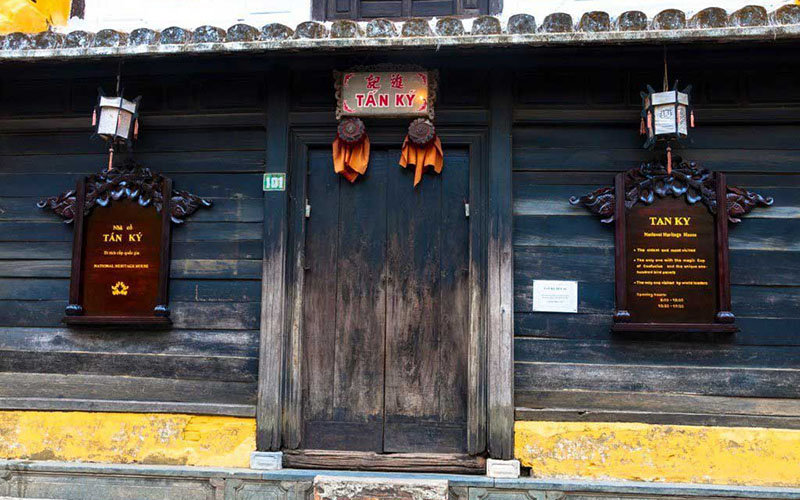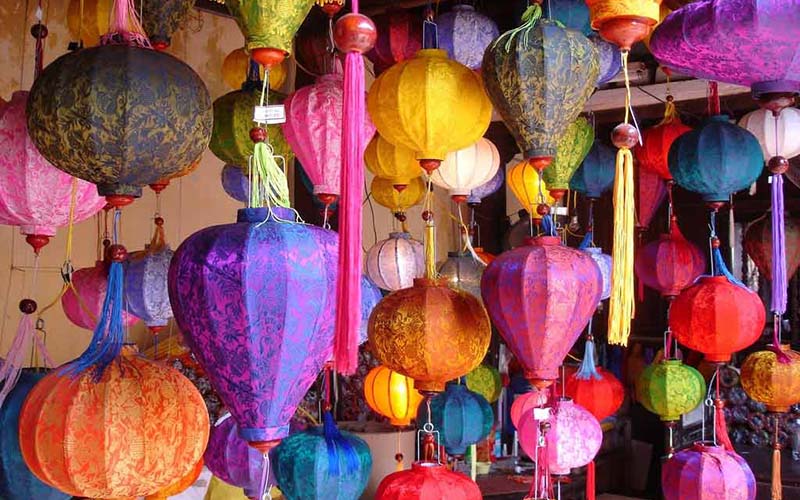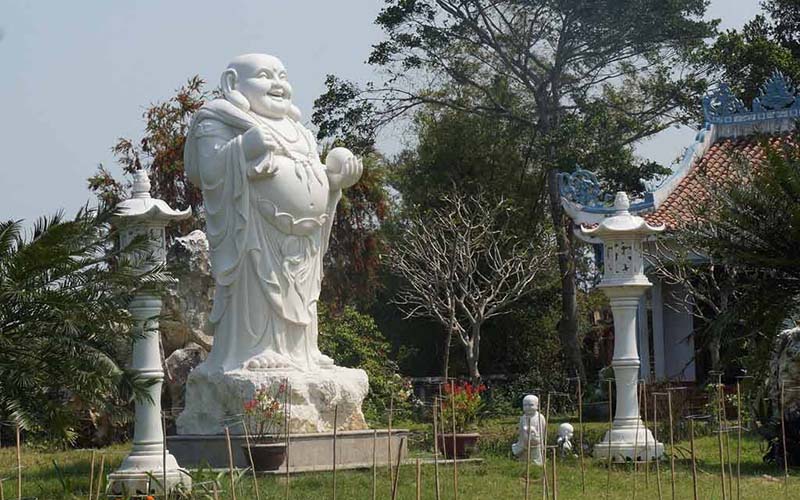Hoi An is a unique heritage site loved by backpackers who wish to explore the preserved cultural heritage of this small, bustling town. This small town with a population of only 88,000 people has infectious energy and contentment. The only way to get here is by road, as it has no station or airport. Reaching the town by road is a rewarding experience, and the picturesque sights make for an interesting trip. Although small, the town is filled with cafes, restaurants, bars, and numerous art and craft shops.
There’s a lot to do in this interesting town of Hoi An. Here’s a list of the best
things to do in Hoi An
, Vietnam.
What to Do in Hoi An Vietnam
1. Visit the Cam Kim Island
After taking just a short ferry ride from the central market of Hoi An, you can reach Cam Kim Island. A great place for morning and afternoon visits, preferably on a bicycle, Cam Kim roads are traffic-free and safe to ride. Don’t miss the wood carving huts on your way. A trip to Cam Kim Island boasts rice paddies, stunningly beautiful views, quiet roads, cozy villages, and warm villagers.
2. Relax at the Cua Dai and An Bang Beaches
Hardly six kilometers off the main town of Hoi An is this pristine Cua Dai and An Bang beach. An ideal getaway during the hot summer months when temperatures soar, Cua Dai and An Bang are two beaches where Cua Dai has largely washed away due to severe erosion, thus forcing the visitors to stretch to the An Bang beach. Nonetheless, both beaches offer great relaxation.
3. Explore Hoi An Museum
Hoi An Museum of History and Culture is unmissable for those keen to learn about the fascinating cultures and civilizations that molded the region’s past. It has themed segments that display several enlightening exhibits on the French Occupation and Vietnam War, Cham sculptures, and the influence of Chinese and Japanese traders on the local culture and heritage, among others.
4. A Trip to the Tan Ky House
The Tan Ky House was built over two centuries ago and preserved through seven long generations to show people of today the rich architecture of Vietnam. The house has Chinese poems characters, and Japanese architectural technique used in various parts of the house, thus offering a distinct influence of both Chinese and Japanese architecture.
Read More: 28 Cheapest Travel Places in the World
5. See the GAM (Gem Art Museum)
A private museum, jewelry store, bar, and lounge beautifully placed in a spectacular villa, GAM offers tourists a rare collection of the richest minerals, cut stones, and gem sculptures in the whole of Vietnam. Have a drink at the museum’s bar section (it’s open into the night) and you can have your museum entrance fee waived.
6. Visit Quan Cong Temple
It is one of Hoi An’s most revered shrines. Dating back to the 17th century, it remains a classic illustration of the city’s unique past and cultural heritage. The temple is built after the brave and loyal Chinese general Quan Van Truong and is especially noteworthy for its timeless architecture that blends Chinese and Vietnamese designs.
7. Taste the Local Cuisine
No Hoi An trip is complete without trying its local gastronomic delights. Beyond savoring its unique flavors, it lets you discover the city’s vibrant culinary heritage. Among the must-taste foods are Cao Lau, Banh Mi, Hoi An Chicken Rice, and Bánh Xèo (pancake). Hoi An’s location close to the coast also makes it a great spot to sample fresh, tasty seafood delights, such as Mì Quảng (seafood noodles), special fish pancakes, and grilled squid.
8. Learn at Hoi An Cooking Classes
There’s no better place to explore the fresh and delicious flavors of Vietnamese cuisine than Hoi An. One of the most famous cookery classes in Vietnam,-the Hoi An cooking classes, will be the perfect place to learn the sumptuous cuisine of Vietnam. Great tutors, a relaxed setting, tasty recipes, and a complete value for money make it worth the experience.
9. Walkthrough the Japanese Bridge
Built-in the late 16th century by the Japanese community of Hoi An, the Japanese bridge was constructed across a small canal. Many renovations have happened since its construction, but the original architectural essence has been kept alive. A small Taoist temple was also built inside the temple during construction, which is still in use.
10. Visit the Handicraft Workshop
This 200-year-old trading house of the Chinese has many skilled artisans and offers a variety of exceptional handicraft work, silk lanterns, and embroidery. You can enjoy traditional music and a dance show at the entrance. This place offers a peek into the skilled talent of the locals and provides a much-needed break with its dance and music show.
Suggested Read: Best Things to Do in Penang – Fall in Love with the Island City
11. Van Duc Pagoda
This sacred temple, where all the Buddhist celebrations occur, is illuminated with lanterns in the evening, and the view right from the entry gate to the temple is breathtaking. Special celebrations are held here on full moons and big occasions like the birthday of Lord Buddha. The temple looks amazingly beautiful and calm, and should definitely be on your bucket list.
12. Hoi An Night Market
Hoi An night market is arguably one of the best you will ever visit. The beautiful silk lanterns illuminate the whole market and are the place’s mainstay. An exceptional variety of styles are available for silk lanterns, and they are a must-buy souvenir. From jewelry to cheese graters, the market has just about everything to empty your pocket.
13. Visit the Tran Family Chapel
Dating back to the early 18th century, the chapel is a famous place of worship. The architecture of the building clearly reflects Chinese and Japanese influences. It also accommodates the vernacular construction style and has an antique room that has rare coins and souvenirs for the collection of artifact lovers.
14. Make a Stop at Hoi An Silk Village
Hoi An is legendary for its silk-making heritage and tradition. And a trip to Hoi An Silk Village offers a slice of the intricate art of silk-making in Vietnam. Besides an array of silk shops, you get the once-in-a-lifetime chance to learn about the entire cycle of producing silk, from the cultivation of silk worms and its various growth stages to the weaving process and the end result in the form of the choicest silk fabrics, home décor, and other one-off accessories.
15. Go on a Shopping Spree at Hoi An Central Market
Don’t miss out on this spot if you are looking for an authentic shopping experience in Hoi An. The central market promises a vibrant experience that is beyond shopping your favorite items like apparels, handicrafts, jewelry, and souvenirs. You can immerse yourself in its effervescent settings and even try local delights.
FAQs (Frequently Asked Questions) on Hoi An Holiday
1. What is the ideal time to visit Hoi An?
The ideal time to visit Hoi An is between January and April, when the weather is pleasant and mild.
2. What are the unmissable attractions in Hoi An?
Whether you are visiting Hoi An for a day or a week, don’t miss out on these top attractions, such as:
- Quan Cong Temple
- Hoi An Central Market
- Japanese Covered Bridge
- Hoi An Silk Village
- Hoi An Night Market
3. What is Hoi An’s currency?
The Vietnamese Dong is Hoi An’s currency. That said, US dollars are also accepted here.
4. Are credit cards and debit cards accepted in Hoi An?
Most hotels, restaurants, and retail outlets across Hoi An accept all major credit cards. But it is always recommended to carry cash.
5. How to get around in Hoi An?
To get around in Hoi An, you can hire a bicycle from one of the dedicated shops or opt for more convenient means like taxis.
6. Is English spoken in Hoi An?
Yes, English is spoken in Hoi An’s almost all main points of interest.
7. Is Hoi An a safe place to visit?
Hoi An is generally a safe destination to visit. But, as with any other destination, you must exercise caution and be aware of potential risks like petty thefts.
Vietnam has always been a destination that attracted various tourists from all over the world with its cultural heritage, beautiful places, and cheap cost of travel. For travelers looking for a unique place to travel in Vietnam that has beautifully preserved its trading port look of the 15th to the 19th century, to a great extent even now, Hoi An is the answer.











